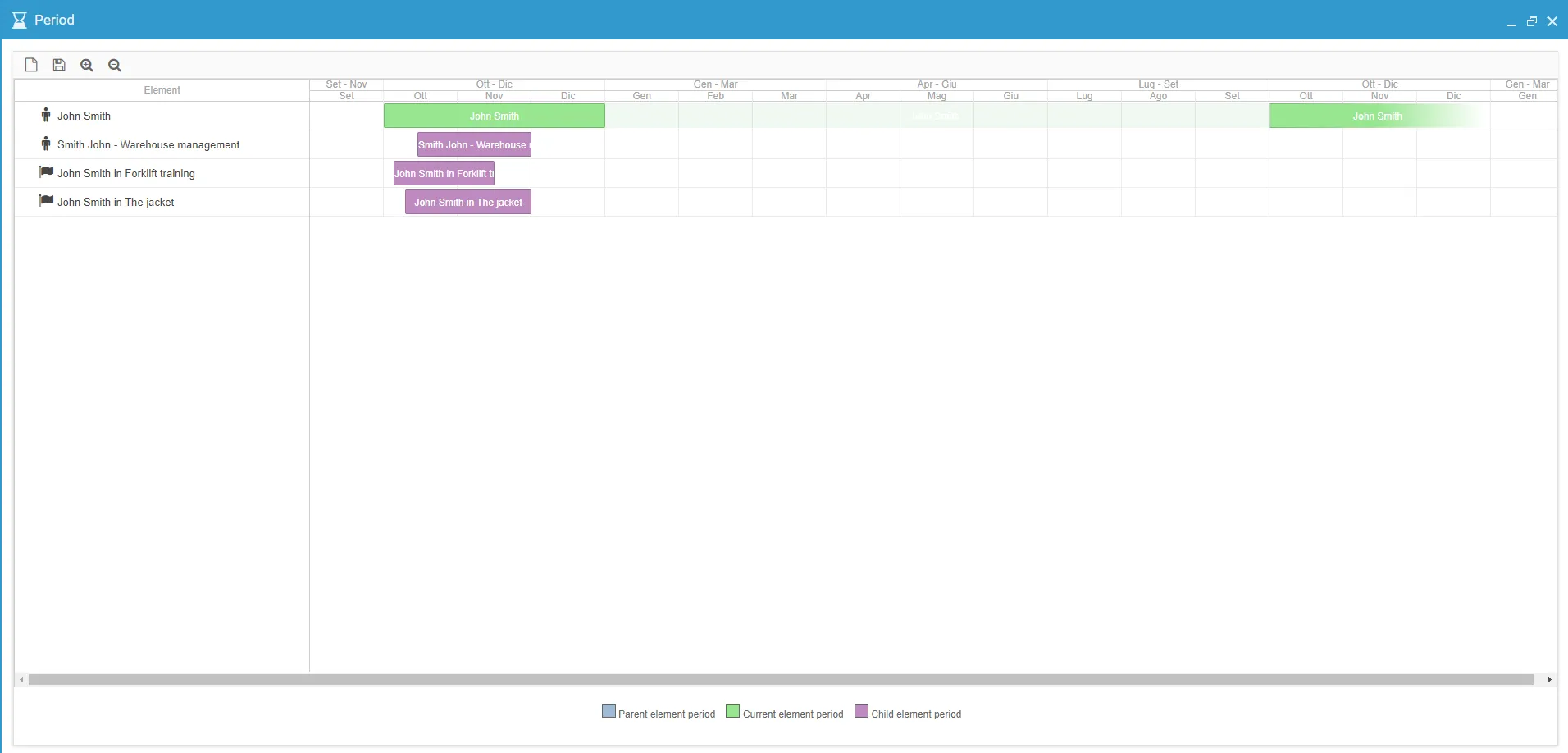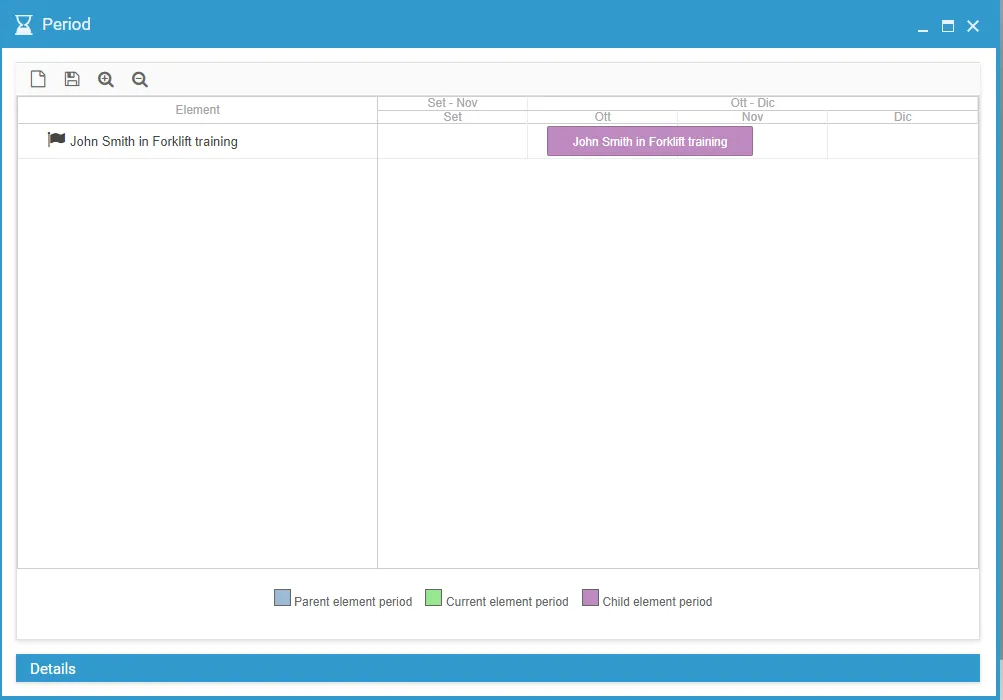Existence Periods
In 4HSE, many elements can have their respective existence periods defined. These periods are extremely useful as they indicate when (for how long and how often) an element was part of your safety project.
When Periods of Existence Are Not Applicable
Section titled “When Periods of Existence Are Not Applicable”Not all elements require a period of existence to be specified. Some are intrinsically tied to a specific date or fixed interval. Examples include:
- The edition of a course
- A medical examination
- A certificate
Practical Example
Section titled “Practical Example”A typical application of periods of existence is in managing seasonal workers.
Imagine an employee, Mario Rossi, who worked during two distinct periods:
- First Period: Worked from 2019-10-01 to 2019-12-01.
- Second Period: Was subsequently hired indefinitely starting from 2020-01-01.
The resulting periods of existence are:
| Start Date | End Date | |
|---|---|---|
| Period 1 | 01/10/2019 | 01/12/2019 |
| Period 2 | 01/01/2020 | +infinite |
Let’s assume that during his employment, the worker:
- was assigned to the Warehouse Management work phase
- attended a Forklift Operator Training course
- attended a General Training (4 hours) course
- was subject to an individual prescription protocol requiring the distribution of a high-visibility vest
These elements are considered child elements of the person element, which in turn acts as the parent. This creates a hierarchy:
- Mario Rossi
|_ Warehouse Management
|_ Forklift Operator Training
|_ General Training (4 hours)
|_ High-Visibility Vest\
This is a recurring concept in 4HSE and applies to many system elements.
Inheritance of Periods of Existence
Section titled “Inheritance of Periods of Existence”By default, elements in 4HSE have an infinite lifespan, ranging from minus infinity to plus infinity. However, it’s important to note that all elements with an unspecified period of existence implicitly inherit those of their parent elements, if the latter have been defined.
With this in mind, let’s assume the periods for the child entities are as follows:
| Element | Start Date | End Date |
|---|---|---|
| Warehouse Management | 15/10/2019 | 30/11/2019 |
| Forklift Operator Training | 05/10/2019 | 15/11/2019 |
| General Training (4 hours) | inherited from Mario Rossi | inherited from Mario Rossi |
| High-Visibility Vest | 10/10/2019 | 30/11/2019 |
As shown in the table, all elements except General Training (4 hours) have a specific existence period and will be displayed on the chart. In contrast, General Training (4 hours) inherits the existence periods from the parent Mario Rossi and therefore will not be displayed on the chart.
Any new child elements will inherit the periods from the person element. Similarly, although the person element may have parent elements, these are not displayed on the chart because they all have an infinite lifespan.

As you can see from the chart, all child element periods (in purple) fall within Period 1.
When adding or editing periods, the system assists in maintaining consistency with the periods of parent/child elements, ensuring that:
- for each period of the current element, there is at least one parent period that contains it
- for each child period, there is at least one period of the current element that contains it
Parent and child periods are not directly editable from this screen and must be modified via the period window of their respective element. For example, if you want to modify the existence period of the Forklift Operator Training for Mario Rossi, you must navigate to its detail form (Project/Office/Actions/Training/Courses/Forklift Operator Training/People/Mario Rossi) and click the
